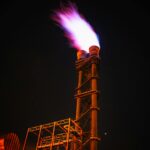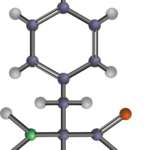Acid rain is one of the most well-known environmental challenges that the world faces. Although it is often perceived as a problem of the past, its impact continues to affect ecosystems, infrastructure, and even human health. This article explains what acid rain is, how it forms, the damage it causes, and the measures being taken to combat it.
What is Acid Rain?
Acid rain refers to any form of precipitation—whether it be rain, snow, fog, hail, or even acidic dust—that contains higher than normal levels of acidic components like sulfuric and nitric acid. While regular rainwater is slightly acidic with a pH of around 5.6, acid rain typically has a pH between 4.2 and 4.4, which makes it harmful to the environment.
The primary cause of acid rain is human activity, specifically the burning of fossil fuels. When fuels like coal, oil, and natural gas are burned, they release sulfur dioxide (SO₂) and nitrogen oxides (NOₓ) into the atmosphere. These pollutants react with water vapor, oxygen, and other chemicals to form acidic compounds that eventually fall to the ground as acid rain.
How Acid Rain Forms
The process of acid rain formation can be broken down into three main steps:
- Emission of Pollutants: Sulfur dioxide and nitrogen oxides are released into the atmosphere, primarily from power plants, factories, and vehicles.
- Chemical Reactions: These pollutants undergo complex chemical reactions in the atmosphere. They react with water vapor and oxygen to form sulfuric acid and nitric acid.
- Precipitation: The acidic compounds mix with moisture in the clouds and fall as acid rain, snow, or fog, often traveling long distances from their sources before they reach the ground.
The Causes of Acid Rain
- Burning of Fossil Fuels: The combustion of fossil fuels is the most significant source of acid rain-causing pollutants. Power plants, industrial facilities, and motor vehicles emit large amounts of sulfur dioxide and nitrogen oxides into the atmosphere.
- Natural Sources: While human activities are the primary contributors, natural events like volcanic eruptions and forest fires can also release sulfur dioxide and nitrogen oxides. However, these natural sources account for a smaller fraction of acid rain compared to human activities.
The Effects of Acid Rain
The consequences of acid rain are far-reaching and impact various aspects of the environment and human life:
Impact on Aquatic Ecosystems: Acid rain lowers the pH of lakes, rivers, and streams, making the water more acidic. This harms aquatic life, as fish and other organisms struggle to survive in acidic conditions. Some species may completely disappear from affected water bodies, leading to a loss of biodiversity.
Damage to Forests and Vegetation: Acid rain can strip essential nutrients from the soil, such as calcium and magnesium, which are crucial for plant growth. It can also weaken trees by damaging their leaves and making them more vulnerable to diseases, extreme weather, and pests. High-altitude forests, where acid fog is common, are particularly at risk.
Soil Degradation: Acid rain changes the chemical composition of the soil, leaching away vital nutrients and minerals. This can have long-term effects on agricultural productivity and disrupt natural forest ecosystems.
Harm to Buildings and Infrastructure: Acid rain accelerates the decay of buildings, monuments, and infrastructure, especially those made from limestone, marble, or other materials susceptible to acid damage. The acids react with calcium carbonate in these materials, causing them to erode more quickly. Historic monuments and culturally significant structures are particularly vulnerable.
Health Effects on Humans: Although acid rain does not pose a direct threat to human health, the pollutants that cause it—sulfur dioxide and nitrogen oxides—can lead to respiratory problems. These pollutants contribute to the formation of fine particulate matter and ground-level ozone, which can exacerbate conditions like asthma, bronchitis, and other lung diseases.
Solutions to Combat Acid Rain
Addressing acid rain requires a combination of reducing emissions, adopting cleaner energy practices, and implementing regulatory measures:
Reducing Emissions: The most effective way to combat acid rain is to reduce the emissions of sulfur dioxide and nitrogen oxides. This can be done by using cleaner energy sources such as wind, solar, and natural gas. Additionally, industries can install pollution control technologies, like scrubbers, to filter and remove harmful emissions from smokestacks.
Energy Conservation: Conserving energy reduces the demand for electricity, which in turn reduces the amount of fossil fuels burned. Simple actions such as using energy-efficient appliances, carpooling, and reducing electricity consumption can make a significant impact.
Regulations and Policies: Governments worldwide have introduced regulations to limit the emission of acid rain-causing pollutants. In the United States, the Clean Air Act Amendments of 1990 led to a significant reduction in sulfur dioxide and nitrogen oxides emissions. Similar policies have been implemented in many other countries, resulting in improved air quality and reduced acid rain levels.
Liming of Lakes and Soils: In some regions, adding lime to acidic lakes and soils helps neutralize acidity and restore ecological balance. This method, known as liming, is a temporary solution and does not address the root causes of acid rain, but it can be effective in the short term.
Conclusion
Acid rain remains a serious environmental problem with widespread effects on ecosystems, infrastructure, and human health. While significant progress has been made in reducing acid rain in many parts of the world, continuous efforts are needed to protect the environment and public health. By reducing emissions, adopting renewable energy sources, and supporting environmental regulations, society can further combat acid rain and work towards a healthier, more sustainable planet.
Understanding acid rain and taking action against it are crucial steps in preserving our ecosystems and ensuring a safe environment for future generations. As awareness and technological advancements grow, we can hope to mitigate the impact of acid rain and protect our natural world.















